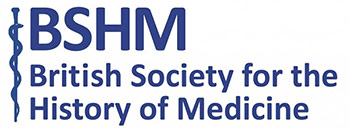Simon Armitage’s newly released poem, ‘Lockdown‘, recalls the Eyam plague of 1665/6, effectively evoking feelings that reverberate in our current situation, and remind us that we are not the first to find ourselves in such a position.

Elizabeth Hancock drags the body of a family member to the Riley graves. She lost her husband and all six children during the outbrak. Illustration from The Brave Men of Eyam by E.N. Hoare published by SPCK, 1881.
In Lockdown, the Poet Laureate touches on some of the most notable features of the story. ‘Thimbles brimmed with vinegar wine’, for example, refers to the practice of Eyam’s residents leaving coins in holes in the rock at the parish boundary. These would be exchanged for vital supplies by the neighbouring villagers, hinting at an understanding of antisepsis not widely acknowledged to be present at that time.
We find new resonance in the story of Emmott Sydall and Rowland Torre, betrothed lovers who found themselves on either side of the cordon sanitaire, seeing each other only from a distance until Emmott failed to appear one day, having tragically succumbed to the plague.
Such stories of ordinary individuals were passed down in the oral tradition, and whilst making it more difficult for historians to corroborate beyond births, marriages and deaths, this adds a somewhat mystical glow to this period.
Indeed, one of the key reasons the Eyam plague may stick in our consciousness more than the countless other local outbreaks of disease over the centuries, is the fascinating cocktail of physical reminders of the plague story around the village, combined with these legends of individual suffering.
Perhaps the Eyam plague is also memorable due to its particularly high death rate. As referenced in the poem, the village tailor received a parcel of cloth from London, believed to contain fleas carrying the plague. Certainly, the tailor’s assistant George Viccars, became the first victim in September 1665.
There was a steady rate of transmission, which slowed over the Winter, but exploded the following Summer, finally petering out in the Autumn of 1666. By then, around one-third of the villagers (260) were dead.
The ‘crisis mortality rate’ in Eyam has been estimated at twice that of the London outbreak, occurring at the same time. Whole families were wiped out, helpless to prevent the rampage of the infection.
Whilst this surge may simply have reflected the exponential nature of the spread within a non-immune population, it has also been suggested that the disease switched from the flea-borne bubonic type to the much more infectious pneumonic transmission.

Rev William Mompesson (right) converses with a parishioner. Illustration from The Brave Men of Eyam by E.N. Hoare published by SPCK, 1881.
Lastly, the image of the Rector, William Mompesson, leading his parishioners in their self-sacrifice, including through the death of his wife, has created a strong narrative of stoical heroism.
This was irresistible, in particular, to the Victorians seeking to retrospectively chronicle the events of 1665/6 with little written information to go on, save a few of Mompesson’s surviving letters.
What now of the plague village? Once again, Eyam is under lockdown. Public gatherings are prohibited, churches and inns are closed, and there is anxiety and uncertainty. On the other hand, supplies from neighbouring villagers have been replaced by those from supermarket delivery vehicles, and the Priests making the decisions, by Public Health officials.
Nevertheless, the community spirit has kicked in with local support schemes in operation, and, spontaneously, numerous villagers have remarked on the renewed empathy they have for their 17th century counterparts.
‘Plague Sunday’, which is celebrated in the village on the last Sunday of August, will certainly have added poignancy this year. Indeed, the Plague Sunday procession ends at Cucklet Delph, a natural amphitheatre used by Mompesson to address the village rather than cram everyone into the church.
This year, using this venue may well once again be for the reason of public safety rather than historical re-enactment.
Words by Dr William Parker, Eyam, Derbyshire
Sources/Further Reading
Clifford J (1989). Eyam Plague 1665-1666, self-published.
Mead R (1720) A Discourse on the Plague, Miller & Brindley. Available at http://www.gutenberg.org/files/32171/32171-h/32171-h.htm
Massad E et al (2004) The Eyam plague revisited: did the village isolation change transmission from fleas to pulmonary? Med Hypotheses 63:911-5.
Race P (1995) Some further consideration on the plague in Eyam, 1665/6. Available at http://www.localpopulationstudies.org.uk/PDF/LPS54/LPS54_1995_56-65.pdf
Wallis P (2005) A Dreadful Heritage: Interpreting Epidemic Disease at Eyam, 1666-2000. Available at http://eprints.lse.ac.uk/22546/1/0205Wallis.pdf
Wood W (1842). The History and Antiquities of Eyam, Whitaker & Company.






